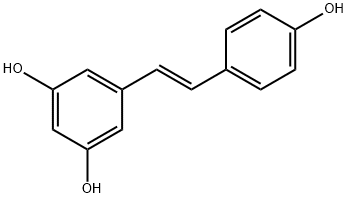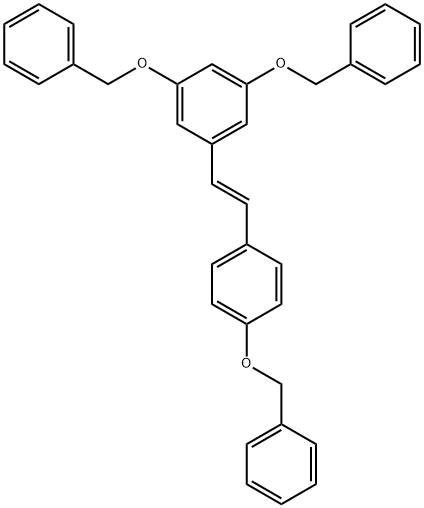Resveratrol
- CAS No.
- 501-36-0
- Chemical Name:
- Resveratrol
- Synonyms
- TRANS-RESVERATROL;TRANS-3,4,5-TRIHYDROXYSTILBENE;baililuchun;Resveratrol Powder;RESVERTROL;(E)-Resveratrol;Grape peel Extract;5-[(E)-2-(4-Hydroxyphenyl)vinyl]benzene-1,3-diol;LGB-RES;SRT 501
- CBNumber:
- CB7325012
- Molecular Formula:
- C14H12O3
- Molecular Weight:
- 228.24
- MDL Number:
- MFCD00133799
- MOL File:
- 501-36-0.mol
- MSDS File:
- SDS
| Melting point | 253-255°C |
|---|---|
| Boiling point | 449.1±14.0 °C(Predicted) |
| Density | 1.359±0.06 g/cm3(Predicted) |
| storage temp. | -20°C |
| solubility | Soluble in DMSO (up to 25 mg/ml) or in Ethanol (up to 20 mg/ml). |
| pka | 9.22±0.10(Predicted) |
| form | Powder |
| color | Off-white |
| Water Solubility | Soluble in water (3 mg/100mL), ethanol (50 mg/mL), DMSO (16 mg/mL), DMF (~65 mg/mL), PBS (pH 7.2) (~100µg/mL), methanol, and acetone (50 mg/mL). |
| Merck | 14,8158 |
| Stability | Stable for 2 years as supplied. Solutions in DMSO or ethanol may be stored at -20°C for up to 1 month. |
| InChI | InChI=1S/C14H12O3/c15-12-5-3-10(4-6-12)1-2-11-7-13(16)9-14(17)8-11/h1-9,15-17H/b2-1+ |
| InChIKey | LUKBXSAWLPMMSZ-OWOJBTEDSA-N |
| SMILES | C1(O)=CC(/C=C/C2=CC=C(O)C=C2)=CC(O)=C1 |
| LogP | 3.139 (est) |
| CAS DataBase Reference | 501-36-0(CAS DataBase Reference) |
| EWG's Food Scores | 1 |
| NCI Dictionary of Cancer Terms | resveratrol |
| FDA UNII | Q369O8926L |
| NCI Drug Dictionary | resveratrol |
| EPA Substance Registry System | 1,3-Benzenediol, 5-[(1E)-2-(4-hydroxyphenyl)ethenyl]- (501-36-0) |
SAFETY
Risk and Safety Statements
| Symbol(GHS) |  GHS07 |
|||||||||
|---|---|---|---|---|---|---|---|---|---|---|
| Signal word | Warning | |||||||||
| Hazard statements | H319 | |||||||||
| Precautionary statements | P264-P280-P305+P351+P338-P337+P313 | |||||||||
| Hazard Codes | Xi | |||||||||
| Risk Statements | 37/38-41-36/38-36-43-22 | |||||||||
| Safety Statements | 26-39-37/39-36/37/39 | |||||||||
| WGK Germany | 3 | |||||||||
| RTECS | CZ8987000 | |||||||||
| HS Code | 29072990 | |||||||||
| NFPA 704 |
|
Resveratrol price More Price(68)
| Manufacturer | Product number | Product description | CAS number | Packaging | Price | Updated | Buy |
|---|---|---|---|---|---|---|---|
| Sigma-Aldrich | 554325 | Resveratrol A phenolic product found in both grape skins and wines. | 501-36-0 | 25mg | $71.1 | 2024-03-01 | Buy |
| Sigma-Aldrich | 34092 | Resveratrol analytical standard | 501-36-0 | 100mg | $349 | 2024-03-01 | Buy |
| Sigma-Aldrich | 1602105 | trans-Resveratrol United States Pharmacopeia (USP) Reference Standard | 501-36-0 | 100MG | $420 | 2024-03-01 | Buy |
| TCI Chemical | R0071 | Resveratrol >99.0%(GC) | 501-36-0 | 1g | $47 | 2024-03-01 | Buy |
| TCI Chemical | R0071 | Resveratrol >99.0%(GC) | 501-36-0 | 5g | $148 | 2024-03-01 | Buy |
Resveratrol Chemical Properties,Uses,Production
Resveratrol Benefits and ralting biological activities
Much of the research pointing to the benefits have been laboratory or animal-based studies. So far, research on resveratrol's effectiveness in humans has yielded mixed results.
Anti-Aging and Anti-Cancer Effects
- Effects on biotransformation enzymes
- Inhibition of proliferation and induction of apoptosis
- Inhibition of tumor invasion and angiogenesis
Anti-inflammatory effects
- Protects Cardiovascular Health
- Inhibition of vascular cell adhesion molecule (VCAM) expression
- Inhibition of vascular smooth muscle cell (VSMC) proliferation
- Stimulation of endolethelial nitric oxide synthase (eNOS) activity
- Inhibition of platelet activiation and aggregation
Helps Protect the Brain and Cognitive/Mental Health
- Stimulation of neurogenesis and microvessel formation
- Stimulation of β-amyloid peptide clearance
- Inhibition of neuroinflammation
- Reduction of oxidative stress
resveratrol sources plants
Resveratrol is anthraquinone terpenoids. It mainly comes from rhizome extract of polygonum cuspidatum. Polygonum cuspidatum: Shrubby perennial herb, up to 1 meter or more. Rhizome lying underground, wood brown, section significantly. Stems erect and cylindrical, surface glabrous, scattered with most red spots, hollow. Leaves alternate, broadly ovate to nearly circular, long 7-12cm, width 5-9cm, apex mucronate, base rounded or cuneate; petiole 1-1.5cm sheath care quality, brown, early fall. Flowering is from July to September, and fruiting from September to October. Spring and autumn can be excavated, cut and dried. Polygonum cuspidatum is born in the valley, creek or shore.
Resveratrol Extraction
Polygonum cuspidatum is the rhizome of polygonaceae polygonum cuspidatum. Polygonum cuspidatum rhizome contains free anthraquinone and anthraquinone glycosides, whch mainly are emodin ether, rhubarb phenol, anthracene glycosides A and B, etc. It also contains resveratrol glycosides, polydatin, protocatechuic acid, dextrose catechin, tree anthrone-8-glucosidecassia, β-sitosterol glucoside and glucose, rhamnose, ginger candy, amino acids, tannin and copper, iron, manganese, zinc, potassium and potassium salts, etc.
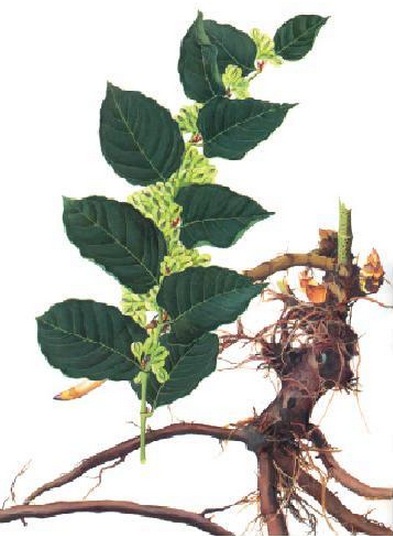
Figure 1 is Polygonum cuspidatum plant
Resveratrol (Res) is a non-flavonoid polyphenol compound. It is considered as a phytoalexin, which is generated when the plant is attacked by pathogenic, or in the poor environment. It is mainly found in grapes, giant knotweed, peanuts, mulberry, pine, Gnetum, Korea Huaifrom 12 families and 31 genera of 72 species of plants.
Extraction of the natural plant: polygonum cuspidatum is used as raw material, extracted, extracted resveratrol crude, and then purified. Crude extraction technologies include organic solvent extraction method, the new method of alkaline extraction and enzymatic extraction method. New methods like microwave-assisted extraction, CO2 supercritical extraction and ultrasonic extraction are also applied. The main purpose of purification is to extract cis-resveratrol and trans-resveratrol and polydatin from raw resveratrol to obtain trans-resveratrol. Common methods of purification are chromatography, silica gel column chromatography, thin-layer chromatography, high performance liquid chromatography and the like.
Resveratrol had significant antioxidant activity on animal fats. Sample of 240mg/kg shows the strongest antioxidant activity during the three samples whose concentration of resveratrol is respectively 120 mg/kg, 240mg/kg, 360mg/kg. In antioxidant tests on lard, the antioxidant effect of resveratrol is stronger than polyphenols with same concentration.
Contents determination method
C18 column, mobile phase consisted of acetonitrile and water (volume ratio 30: 70), and UV detection at 30 6nm are used to detect. The results show that if the concentration of resveratrol is in 10~250 μg/mL, concentration and peak area show a good linear relationship (r = 0.9999); the recovery is 925% to 1026%; the lowest detectable concentration is 0.6mg/g. The flow rate can be adjusted to detect the enzymatic conversion of polydatin and resveratrol at the same time.
Pharmacological effects
Resveratrol is not only the chemopreventive agents of neoplastic diseases, but also the chemopreventive agents to reduce platelet aggregation and prevent and treat atherosclerosis, cardiovascular and cerebrovascular disease. In the 1990s, studies of science and technology workers on resveratrol have advanced, and reveal its pharmacological effects. It can inhibit normal platelet aggregation, prevent myocardial cram, cerebral embolism. It has a protective effect on cardiac hypoxia, restore decline of cardiac output which is caused by burn or hemorrhagic shock, and can expand arteries and improve microcirculation.
In 1998, United States Al.Mindell listed resveratrol as one of “the 100 most popular and effective anti-aging substance” when he compiled the anti-aging Scripture. Peanut oil, peanut butter and other foods rich in resveratrol will be the new fashion of nutrition and health in the 21st century. Resveratrol is the chemopreventive agents of neoplastic diseases, but also the chemopreventive agents to reduce platelet aggregation and prevent and treat atherosclerosis, cardiovascular and cerebrovascular disease. Resveratrol shows some inhibitory effect on staphylococcus aureus, the card he bacteria, escherichia coli, pseudomonas aeruginosa, and has a stronger inhibitory effect on the orphan virus, herpes simplex virus, and enteroviruses, coxsackie a, b groups.
The synthetic method of resveratrol
Resveratrol is an inhibitor of many oxidative metabolism enzymes of aromatic carcinogens. It is named as the natural chemopreventive agents of cardiovascular and cerebrovascular diseases and cancer. Many studies have shown that resveratrol also has many functions, such as anti-mutagenic activity, protecting cell toxicity induced by the oxidation of lipoprotein, inhibiting tumor cell reproduction, and so on.
Human separated resveratrol from the root of veratrum grandiflorum for the first time in 1940. Researchers currently has found resveratrol from at least 21 families and 31 genera of 72 species of plants, such as grape vine genus, vitis snake, legumes arachis, cassia, sophora, polygonum, and so on. Because of the low concentration of resveratrol in the plant and the high extraction cost, using chemical, biological, genetic engineering and other methods to obtain resveratrol has become an indispensable means for its development process. The roadmap to synthesis resveratrol is as follows:
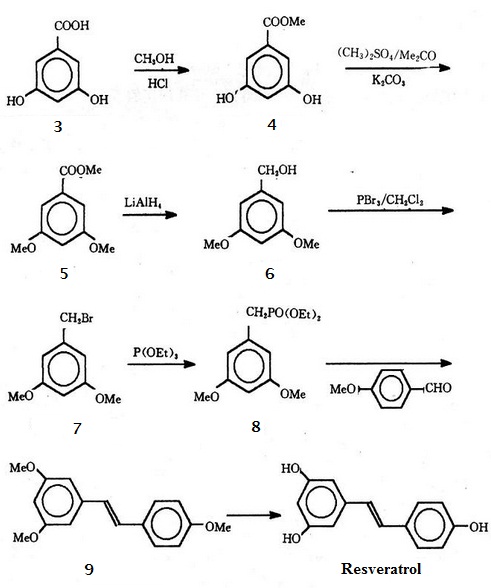
3,5-dihydroxybenzoic acid (3) forms 3,5-dihydroxybenzoic acid methyl ester (4) by esterification reaction. Choose methyl ether as phenolic hydroxyl-protecting groups. (4) reacts with dimethyl sulfate to get 3,5-di-methoxybenzoate (5). (5) generates the corresponding benzene methanol (6) after reduction, and forms 3, 5-dimethoxy benzyl bromide (7) through further bromination. Then diethyl (3,5-dimethoxy benzyl) phosphonate (8) can be get by roman abramovich's reaction. (8) reacts with p-anisaldehyde to form the key intermediate 3,4,5-trimethoxy-trans-stilbene (9) via Wittig-Honer reaction. Finally, methyl can be removed by freshly prepared aluminum triiodide. Then the aimed product resveratrol can be separated by thin layer chromatography.
Solubility
Resveratrol is a kinds of natural antioxidants that presents in grapes, red wine, mulberries, peanuts and polygonum cuspidatum. It is polyphenols. It is soluble in organic solvents but insoluble in water. Its dissolved order in organic solvents is: acetone > ethanol> methanol> ethyl acetate> ether> chloroform.
Possible Side effects
Little is known about the safety of long-term or high dose use of resveratrol.
Since resveratrol might act like estrogen, some medical experts recommend that people with hormone-sensitive cancers (condition such as breast cancer, uterine cancer, ovarian cancer, endometriosis, or uterine fibroids), pregnant women, and children avoid taking resveratrol.
In addition, resveratrol could interact with blood thinners like warfarin, aspirin, and ibuprofen by slow blood clotting, which may increase the risk of bleeding in people with bleeding disorders.
According to one study, high-dose resveratrol supplementation was associated with fever, reduced blood cells, and decreased blood pressure.
There is some concern that high doses of resveratrol supplements could lead to kidney problems in some people.
Uses
- Resveratrol can prevent the oxidation of low density lipoprotein, and has the potential effect on preventing cardiovascular disease, cancer, antivirus and immune regulation. Its main role is antioxidant properties.
- Cardiovascular drugs. It can reduce hematic fat and prevent heart disease. It also has the effect on AIDS.
- Antioxidants and the activity in anti-inflammatory, antithrombotic, anti-cancer, anti-cancer, anti hyperlipidemia and antibacterial.
- Anti-aging, regulating blood lipid, cardiovascular protection, anti-hepatitis.
- Resveratrol is a phytoalexin produced naturally by several plants with anti-cancer, anti-inflammatory, blood-sugar-lowering and other beneficial cardiovascular effects.
Chemical Properties
Off-White to Tan Powder
Uses
raw material for Tamiflu; Oseltamivir
Uses
Minor constituent of wine, correlated with serum lipid reduction and inhibition of platelet aggregation. Resveratrol is a specific inhibitor of COX-1, and it also inhibits the hydroperoxidase activity of COX-1. It has been shown to inhibit events associated with tumor initiation, promotion and progression.
Uses
Resveratrol is a natural antioxidant. It reduces blood viscosity, inhibits platelet aggregation and vasodilation, keeps blood flowing smoothly, and prevents the occurrence and development of cancer. It has the effect of preventing and treating atherosclerosis, coronary heart disease, ischemic heart disease and hyperlipidemia. It has tumor-inhibiting effects. Resveratrol also has estrogen-like effects and can be used to treat breast cancer and other diseases. It slows down aging and prevents cancer. Red grape skins, red wine and grape juice contain high concentrations of resveratrol. Studies have shown that as humans age, the integrity of chromosomes is disrupted. However, resveratrol activates proteins that can repair chromosomes, thus slowing down aging.
Resveratrol is effective in preventing aging, in part due to its antioxidant properties, and is recommended for use in pre- or post-sun products. Resveratrol can cross the stratum corneum and be found in the dermis and epidermis. It has been shown to protect dermal collagen and may be effective in enhancing glycosaminoglycans, thereby improving tissue hydration. It has been shown to stimulate cell renewal in the skin and to help increase skin thickness. It has been shown to inhibit tyrosinase, which suggests it may be used to reduce hyperpigmentation.
Definition
ChEBI:Resveratrol is a stilbenol that is stilbene in which the phenyl groups are substituted at positions 3, 5, and 4' by hydroxy groups. It has a role as a phytoalexin, an antioxidant, a glioma-associated oncogene inhibitor and a geroprotector. It is a stilbenol, a polyphenol and a member of resorcinols.
Synthesis Reference(s)
Tetrahedron Letters, 43, p. 597, 2002 DOI: 10.1016/S0040-4039(01)02227-4
Description
Resveratrol, a non-flavonoid polyphenolic compound, is widely found in the skin of red grapes, nuts, berries, Polygonum cuspidatum root, etc. It is reportedly known to exhibit pharmacological properties including anti-cancer, anti-inflammatory, antioxidant, neuroprotectant, anti-atherogenic property and reduces the synthesis of pro-atherosclerotic substances.
Biological Activity
A phytoestrogen with antitumor, antioxidant, antiplatelet, anti-inflammatory and antifungal effects. Inhibits cytochrome P450 1A1 (IC 50 = 23 μ M) and displays mixed agonist/antagonist actions at ER α and ER β estrogen receptors. Converted into the anticancer agent piceatannol (4-[(1E)-2-(3,5-Dihydroxyphenyl)ethenyl]-1,2-benzenediol ) by cytochrome P450 1B1
Biochem/physiol Actions
ED50 = 15 μM against COX-1
Mechanism of action
Resveratrol can be found in the skins and seeds of grapes and in peanuts. It has demonstrated potent antioxidant, anti-inflammatory, and anti-proliferative activities. Topical application of resveratrol in mice demonstrated photoprotection by significantly decreasing UVB-mediated generation of hydrogen peroxide and infiltration of leukocytes. Its antiproliferative properties are related to the inhibition of cellular events associated with tumor initiation, promotion, and progression, and the triggering of apoptosis in tumor cells.
Anticancer Research
Resveratrol is a stilbinoid, found in the skin of grapes, peanuts, berries, and otherfruits. The cytotoxic effect of resveratrol is mediated via the inhibition of severaltranscription factors; upregulation of caspases, Bax, and p53; and downregulationof survivin, cyclins, and Bcl-2. Increase in Bax/Bcl-2 ratio and upregulation ofcaspases lead to apoptosis. The beneficial effects of resveratrol against cancer havebeen shown in all the stages of cancer including carcinogenesis, initiation,promotion, and progression. It could inhibit Wnt target gene expression in normalcolonic mucosa of the colorectal cancer patients. It increases the caspase-3 inmalignant hepatic tissue and induces anticarcinogenic effects in humangastrointestinal tract (Hosseini and Ghorbani 2015). It has the ability to inhibit thedevelopment of DMBA-induced phenoblastic lesions in the mammary gland organculture (MMOC) model of carcinogenesis and in two-stage full-term mouse model(Balunas and Kinghorn 2005). It prevents carcinogenesis by upregulating Bax andp53 proteins and downregulating NF-κB, COX-2, AP-1, cyclin-dependent kinases,hypoxia-induced factor 1α (HIF-1α), cyclins, MMPs, cytokines, and Bcl-2 proteins(Singh et al. 2016b). It plays a pivotal role in preventing the initiation, promotion,and progression of cancer by inducing phase II drug metabolizing enzymes, bymediating anti-inflammatory effects and inhibiting COX and hydroperoxidasefunctions, and by inducing cell differentiation, respectively, in human promyelocyticleukemic cells (Jang et al. 1997; Aggarwal et al. 2004).
Resveratrol, a noteworthy polyphenol occurring in different plants such as grapesand peanuts, has appeared to be required in cell reinforcement, anti-proliferative,anti-inflammatory, and chemopreventive activities. Various potential medicaladvantages, including decreased danger of malignancy and coronary illness, arebelieved to be related to the utilization of resveratrol. It can successfully and proficientlyrepress endothelial cell multiplication and migration, with little cell toxicityin the HUVEC and ARPE19 lines (Cao et al. 2010). Also, there have been perceptionsof inhibitory consequences for smooth muscle cell migration (Venkatesanet al. 2009) and tumor necrosis factor-alpha-incited monocyte adhesion and migration(Kim et al. 2007). As of late, it was recognized that the restraint of PDGF-BB-actuatedcell migration by resveratrol and the particular inhibitors PDGF-R, PI3K,MEK, or p38 in wound healing test agreed with diminished enactment of PDGFBB-incited PDGFR-β, PI3K/Akt, ERK, and p38 phosphory-lation in Western blotinvestigation, recommending that resveratrol hinders cell migration through theinhibition of PI3K/Akt, PDGFR-β, and MAPK cascade (Chan et al. 2013).
storage
+4°C
References
1) Fremont (2000), Biological effects of resveratrol ; Life Sci., 66 663 2) Howitz et al. (2003), Small molecule activators of sirtuins extend Saccharomyces cerevisiae lifespan; Nature, 425 191 3) Park et al. (2012), Resveratrol ameliorates aging-related metabolic phenotypes by inhibiting cAMP phosphodiesterases; Cell, 148 421
Resveratrol Preparation Products And Raw materials
Raw materials
1of2
Preparation Products
| Supplier | Tel | Country | ProdList | Advantage | |
|---|---|---|---|---|---|
| Jiurui Biology Chemistry Co.,Ltd. | +86-0744-8561603 +8619974416182 | sales11@jiuruibiochem.com | China | 26 | 58 |
| ZhenYiBio Technology Inc | +8615309206328 | alexxue@zhenyibio.com | China | 299 | 58 |
| Sinoway Industrial co., ltd. | 0592-5800732; +8613806035118 | xie@china-sinoway.com | China | 992 | 58 |
| Changsha Staherb Natural Ingredients Co., Ltd. | +86-0731-84213302 +8618374838656 | sales@staherb.cn | China | 1025 | 58 |
| Wuhan Quanjinci New Material Co.,Ltd. | +8615271838296 | kyra@quanjinci.com | China | 1532 | 58 |
| Leading Chemical and Trading Co.,Ltd | +8615669938129 | sales@leadingchemical.com | China | 121 | 58 |
| Shanghai UCHEM Inc. | +862156762820 +86-13564624040 | sales@myuchem.com | China | 6710 | 58 |
| Hebei Yime New Material Technology Co., Ltd. | +86-66697723 +86-17703311139 | admin@china-yime.com | China | 563 | 58 |
| Hebei Lingding Biotechnology Co., Ltd. | +86-18031140164 +86-19933155420 | erin@hbldbiotech.com | China | 878 | 58 |
| Firsky International Trade (Wuhan) Co., Ltd | +8615387054039 | admin@firsky-cn.com | China | 436 | 58 |
Related articles
- The benefits of Resveratrol
- Resveratrol is a polyphenol that naturally occurs in numerous foods, such as blueberries and peanuts, and grapes and their der....
- Apr 18,2024
- Is Resveratrol safety?
- Resveratrol is a phytoalexin found in over 300 edible plants, including grapes, berries, and peanuts.
- Nov 10,2023
- Mechanism of Action of Resveratrol in Skin Barrier Repair
- The ability of any topical cosmeceutical to permeate the skin barrier is essential to its ability to reach actively metabolic....
- Mar 6,2022
View Lastest Price from Resveratrol manufacturers
| Image | Update time | Product | Price | Min. Order | Purity | Supply Ability | Manufacturer | |
|---|---|---|---|---|---|---|---|---|
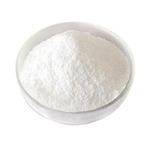 |
2024-04-25 | Resveratrol
501-36-0
|
US $98.00-90.00 / kg | 1kg | 99% | 100kg | Wuhan Cell Pharmaceutical Co., Ltd | |
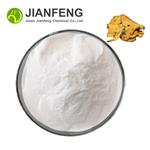 |
2024-04-25 | Resveratrol
501-36-0
|
US $0.00-0.00 / kg | 1kg | 99%HPLC | 20t | Jinan Jianfeng Chemical Co., Ltd | |
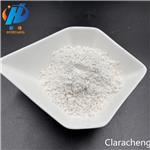 |
2024-04-24 | Trans-Resveratrol
501-36-0
|
US $20.00 / kg | 1kg | 99.9% | 200000kg | Ouhuang Engineering Materials (Hubei) Co., Ltd |
-

- Resveratrol
501-36-0
- US $98.00-90.00 / kg
- 99%
- Wuhan Cell Pharmaceutical Co., Ltd
-

- Resveratrol
501-36-0
- US $0.00-0.00 / kg
- 99%HPLC
- Jinan Jianfeng Chemical Co., Ltd
-

- Trans-Resveratrol
501-36-0
- US $20.00 / kg
- 99.9%
- Ouhuang Engineering Materials (Hubei) Co., Ltd
501-36-0(Resveratrol)Related Search:
1of4





